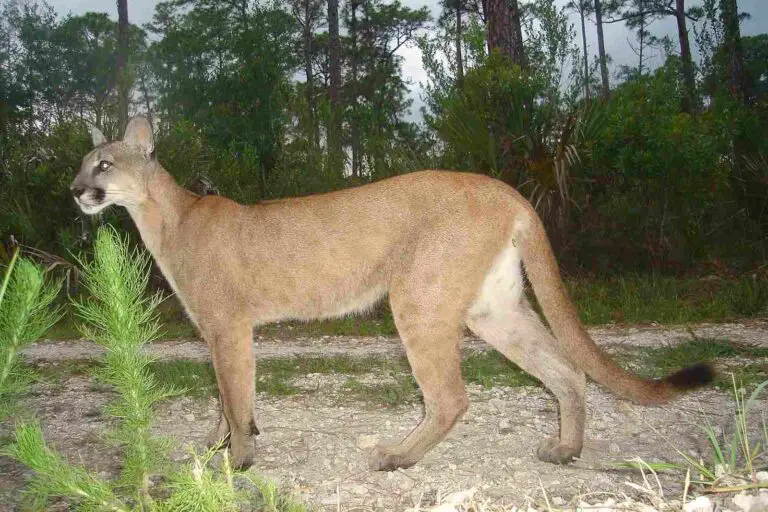Pyrolysis Meaning, Principle, Types and Examples
Pyrolysis is a thermal treatment process whereby materials are decomposed under high temperature, in the absence of oxygen.
This article discusses the concept of pyrolysis from different perspectives, as outlined below;
-Pyrolysis Meaning: 8 Ways to Define Pyrolysis
-Pyrolysis Principle: Mechanism of the Pyrolysis Process
Pyrolysis Meaning: 8 Ways to Define Pyrolysis
Pyrolysis is the thermochemical degradation of materials to yield byproducts that can be used for various purposes.
As shown in the above definition, pyrolysis involves the influence of thermal and chemical factors.
Another important attribute of pyrolysis is the absence of oxygen during the process. This is mentioned in the definition below;
Pyrolysis is the thermal decomposition of materials at temperatures of 300-900°C [9] in the absence of oxygen, to yield products that are of industrial relevance.
To elaborate the definition of pyrolysis, these ‘materials’ involved in the process, can be highlighted, as done below;
Pyrolysis is the thermal decomposition of materials such as municipal solid waste, plastic, and biomass, to yield valuable products.
The definitions so far imply that pyrolysis decomposes the feedstock material and yields important products. These products are mentioned below;
Pyrolysis is the thermochemical decomposition of organic matter or municipal solid waste, in the absence of oxygen, to yield condensable liquids, non-condensable gases, and residual solids [7].
Another way to describe pyrolysis is within the context of waste-to-energy technology;
Pyrolysis is a thermal treatment, waste-to-energy technology, like incineration and gasification, which involves heating a material in a pressurized reactor, in the absence of oxygen, to produce halogens, , benzene, toluene, methane, and biochar, among other products.
Because pyrolysis involves the chemical conversion of matter, this chemical-alteration factor can be used to define the concept;
Pyrolysis is a process whereby materials organic matter and plastics, undergo chemical transformation in the absence of oxygen, and under high temperature conditions.
When biomass is heated during pyrolysis, it usually produces energy, which can.be considered a renewable form of energy. This is included in the definition below;
Pyrolysis is the heating of biomass, in the absence of oxygen, to produce bioenergy or biofuels that can be used for heating and electricity generation.
Lastly, pyrolysis can be defined within the contexts of geology and geochemistry, as follows;
Pyrolysis is a geological method of analysis whereby a rock sample (usually shale) is heated under controlled conditions, in the absence of oxygen, to determine the geochemical composition of the sample [6].
The geologic practice of pyrolysis is much different from the waste-to-energy application. Unlike the latter which is conducted in a thermal treatment plant, it is usually carried out in an apparatus known as a rock eval pyrolyzer.
Pyrolysis is used for analysis and treatment purposes. In both cases, thermal conversion is used to alter the chemical composition and configuration of the feedstock material.
It can also be applied to a variety of feedstock materials including biomass (organic matter), plastics, and other degradable solid materials.
The absence of oxygen in pyrolysis makes it similar to anaerobic digestion.
However, anaerobic digestion differs from pyrolysis by being a more complex and elaborate thermal decomposition that involves multiple stages and yields relatively-simple byproducts. Also, high temperature is not always a priority in anaerobic digestion.
Pyrolysis Principle: Mechanism of the Pyrolysis Process
Pyrolysis typically occurs in a reactor.
There are various types of pyrolysis reactors, including rotary kiln reactor, ablative reactor, fixed-bed reactor, and vortex reactor. These reactors differ mainly in their design and mode of application.
In order for a pyrolysis reactor to be efficient and effective, it must have two important components; a heat transfer mechanism, and an oxygen-sealing mechanism.
Respectively, these two components help to ensure that high temperature is provided, and oxygen is kept out of the system during pyrolysis.
The principle of pyrolysis is anaerobic thermal decomposition, whereby a substrate is broken down and chemically converted under the influence of heat energy, in the absence of oxygen.
Steps in the pyrolysis reaction are heating, bond-splitting, and conversion. Heating of the feedstock or substrate is the primary cause of bond-splitting, which ultimately results in chemical conversion. These steps are briefly discussed below;
1). Heating (Step 1)
Heating is the first step in pyrolysis.
During heating, the feedstock or substrate is subjected to high temperature conditions in the absence of oxygen.
The temperature of heating depends on the type of material or feedstock, because different materials vary in their decomposition temperatures.
At least 300°C may be applied in pyrolysis, although heating temperature for some materials like olive waste may range from 150-1050°C [2].
Types of pyrolysis can also be differentiated based on temperature, into low-temperature and high-temperature (or low heating rate and high heating rate) pyrolysis.
2). Bond-Splitting (Step 2)
The second step in the pyrolysis process is bond-splitting or bond-breaking.
This is also the onset of chemical reactions in a pyrolysis reactor.
During bond-splitting, the complex compounds and molecules of the substrate begin to decompose and breakdown, to form new, simpler compounds, under the influence of heat.
At this stage, polymers become monomers, and most volatile components of the substrate are released. As a result, this stage may also be referred to as volatilization.
3). Conversion (Step 3)
Chemical conversion is the final step in pyrolysis.
It is also the most important step, because it leads to the formation of important byproducts which have various industrial uses.
During conversion, chemical bonds in the substrate compounds continue to split, forming relatively small molecules. At the same time, these molecules may react with each other to form new compounds.
Examples of byproducts of pyrolysis conversion include methane, liquid fuel and biochar.
Also, chemical conversion is usually the most complex step in a pyrolysis reaction, and may occur within the highest temperature range of the overall process.

Types of Pyrolysis
Types of pyrolysis are; slow, fast, flash, one-step and two-step pyrolysis. These five types are classified based on catalyst, and reaction rate.
Pyrolysis Types Based on Catalyst
-One-Step Pyrolysis
One-step pyrolysis is a simple type of pyrolysis which does not always depend on a catalyst to be effective.
It is usually carried in a basic, fixed-bed reactor, and mainly relies on heat to decompose the substrate. In some cases, a catalyst may be used.
One-step pyrolysis is usually applied for substrates like municipal solid waste that do not require complex reactions to be chemically converted, although some plastics require catalysts to undergo effective pyrolysis.
However, it must be noted that both one-step and two-step pyrolysis comprise of the three-step process that includes heating, bond-splitting, and conversion.
-Two-Step Pyrolysis
In two-step pyrolysis, a catalyst is always used [4].
Also, rather than the basic, fixed-bed reactor. this type of pyrolysis depends on a dual-bed reactor.
It is usually applied for more complex substrates like biomass, that require an elaborate process of reactions for chemical conversion to occur.
Two-step pyrolysis is also used when there is need to achieve certain byproducts, like aromatic bio-oil [5]. It also usually includes preceded by a heat pretreatment stage, during which the substrate undergoes thermal treatment and decomposition in the absence of a catalyst.
Pyrolysis Types Based on Rate of Reaction
-Slow Pyrolysis
As known as ‘conventional’ pyrolysis, slow pyrolysis is a low-temperature, long-duration type of pyrolysis,
Due to the low temperatures used, this type of pyrolysis is known for its lengthy residence periods for both solids and gases.
Slow pyrolysis is particularly good for biomass, by which it can be converted to biochar, bio-oil and biogas [12].
During slow pyrolysis, the substrate does not combust, but rather loses its volatile constituents and its original physicochemical characteristics.
The heating rate of slow pyrolysis is generally between 0.1-2.0°C per second [10]. However, much lower rates may be used.

-Fast Pyrolysis
In fast pyrolysis, the material is heated rapidly, to high temperatures that depend on the decomposition temperature of the material.
It is a more recent and common type of pyrolysis than slow pyrolysis, and is usually applied in the conversion of biomass to bio-oil, biochar and biogas.
The heating temperature may range from about 650°C to 1000°C for fast pyrolysis of biomass [1].
This method has the advantage of bringing about rapid thermal decomposition and producing a range of valuable byproducts.
-Flash Pyrolysis
Also known as ‘ultra-fast’ pyrolysis, flash pyrolysis is characterized by rapid rates of heating and thermal decomposition [13].
The heating rate in flash pyrolysis may be as high as 10°C per second, and reaction temperatures may range from 400°C to as high as 1,300°C.
Flash pyrolysis is often used in the conversion of biomass to produce bio-oil and other gaseous substances [8].
Examples of Pyrolysis
1). Pyrolysis of Wood Sawdust [11]
Pyrolysis of wood sawdust can be performed at temperatures between 350-650°C and at a heating rate of 50°C per minute.
These conditions are typical of slow pyrolysis, which is effective in this case because wood sawdust has a relatively-low decomposition temperature.
Factors that affect the effectiveness of the process include the particle size of the wood sawdust, heating rate, overall pyrolysis temperature, and flow rate of nitrogen (which is acting as a catalyst).
The final products of the process include bio-oil, pyrolytic gas (also called syngas or biogas), and biochar, each of which has distinct characteristics and applications.
It is important to note that wood sawdust is a form of biomass.
2). Pyrolysis of Plastic [3]
Plastic is a complex polymer which constitutes major portion of municipal solid waste.
It can be converted through pyrolysis, to produce a range of hydrocarbons and other byproducts that can be used as a source of energy, among other applications.
The general temperature of decomposition of plastics lies between 300 and 900°C. Pyrolysis provides an effective option to address the problem off pollution and environmental degradation caused by plastics.
A catalyst like silica-alumina can increase the productivity of plastic pyrolysis, such that the yield of useful hydrocarbon byproducts may be up to 84%.
3). Pyrolysis of Biomass or Organic Waste [12]
Pyrolysis of biomass typically leads to the production of valuable materials like char, biofuel and other chemicals.
The heating rate and temperature which may be used, depends on the type of biomass involved. Through a series of stages and reactions, pyrolysis turns biomass into a valuable renewable resource that can be used to generate electricity.

Conclusion
Pyrolysis is a thermochemical process that involves the heat-driven decomposition of materials in the absence of oxygen, to produce energy, renewable fuels, and other valuable chemicals.
Steps in the pyrolysis process are;
- Heating
- Bond-Splitting
- Conversion
Types of pyrolysis are;
- One-Step Pyrolysis
- Two-Step Pyrolysis
- Slow Pyrolysis
- Fast Pyrolysis
- Flash Pyrolysis
These types are classified based on catalyst and heating rate.
Examples of pyrolysis are;
- Pyrolysis of Wood Sawdust
- Pyrolysis of Plastic
- Pyrolysis of Biomass or Organic Waste
References
1). Cheriyadath, S. (2020). “What is Pyrolysis?” Available at: https://www.azocleantech.com/article.aspx?ArticleID=336. (Accessed 27 April 2022).
2). Elorf, A.; Kandasamy, J.; Belandria, V.; Bostyn, S.; Sarh, B.; Gökalp, I. (2019). “Heating rate effects on pyrolysis, gasification and combustion of olive waste.” Biofuels 12(9):1-8. Available at: https://doi.org/10.1080/17597269.2019.1594598. (Accessed 27 April 2022).
3). Gaurh, P.; Pramanik, H. (2013). “Studies on Pyrolysis of Plastic Wastes Polyethylene to Valuable Hydrocarbons to Minimize Plastic Wastes Load to Environment.” CHEMCON 2013At: ICT MUMBAI. Available at: https://doi.org/10.13140/RG.2.1.3391.4962. (Accessed 27 April 2022).
4). Güngör, A.; Onenc, S.; Ucar, S.; Evlul, D.; Yanik, J. (2012). “Comparison between the “one-step” and “two-step” catalytic pyrolysis of pine bark.” Journal of Analytical and Applied Pyrolysis 97:39–48. Available at: https://doi.org/10.1016/j.jaap.2012.06.011. (Accessed 27 April 2022).
5). Hammer, N. L.; Garrido, R.; Starcevich, J.; Coe, C. G.; Satrio, J. (2015). “Two-Step Pyrolysis Process for Producing High Quality Bio-Oils.” Industrial & Engineering Chemistry Research 54(43):151008171200006. Available at: https://doi.org/10.1021/acs.iecr.5b02365. (Accessed 27 April 2022).
6). Hart, B.; Steen, A. S. (2015). “Programmed pyrolysis (Rock-Eval) data and shale paleoenvironmental analyses: A review.” Interpretation 3(1):SH41-SH58. Available at: https://doi.org/10.1190/INT-2014-0168.1. (Accessed 27 April 2022).
7). Ibrahim, H. A. (2020). “Introductory Chapter: Pyrolysis”, in H. A. H. Ibrahim (ed.), Recent Advances in Pyrolysis, IntechOpen, London. Available at: https://doi.org/10.5772/intechopen.90366. (Accessed 27 April 2022).
8). Jahirul, M. I.; Rasul, M.; Chowdhury, A.; Ashwath, N. (2012). “Biofuels Production through Biomass Pyrolysis —A Technological Review.” Energies 5(12):4952-5001. Available at: https://doi.org/10.3390/en5124952. (Accessed 27 April 2022).
9). Miandad, R.; Rehan, M.; Barakat, M. A.; Aburiazaiza, A. S.; Khan, H.; Ismail, I. M. I.; Dhavamani, J.; Gardy, J.; Hassanpour, A.; Nizami, A. (2019). “Catalytic Pyrolysis of Plastic Waste: Moving Toward Pyrolysis Based Biorefineries.” Front. Energy Res., 19 March 2019 | https://doi.org/10.3389/fenrg.2019.00027. (Accessed 27 April 2022).
10). Recari, J.; Berrueco, C.; Abelló, S.; Montané, D. (2014). “Effect of temperature and pressure on characteristics and reactivity of biomass-derived chars.” Bioresource Technology 170. Available at: https://doi.org/10.1016/j.biortech.2014.07.080. (Accessed 27 April 2022).
11). Verma, A.; Thakur, L. S.; Shankar, R.; Mondal, P. (2019). “Pyrolysis of wood sawdust: Effects of process parameters on products yield and characterization of products.” Waste Management 89:224-235. Available at: https://doi.org/10.1016/j.wasman.2019.04.016. (Accessed 27 April 2022).
12). Zaman, C. Z.; Pal, K.; Yehye, W. A.; Suresh Sagadevan, S.; Shah, S. T.; Adebisi, G. A., Emy Marliana, E.; Rafique, R. F.; & Johan, R. B. (2017). “Pyrolysis: A Sustainable Way to Generate Energy from Waste.” In (Ed.), Pyrolysis. IntechOpen. Available at: https://doi.org/10.5772/intechopen.69036. (Accessed 27 April 2022).
13). Zeng, K.; Gauthier, D.; Flamant, G. (2014). “High Temperature Flash Pyrolysis of Wood in a Lab-Scale Solar Reactor.” ASME 2014 8th International Conference on Energy SustainabilityAt: Boston, Massachusetts, USA. Available at: https://doi.org/10.1115/ES2014-6417. (Accessed 27 April 2022).





